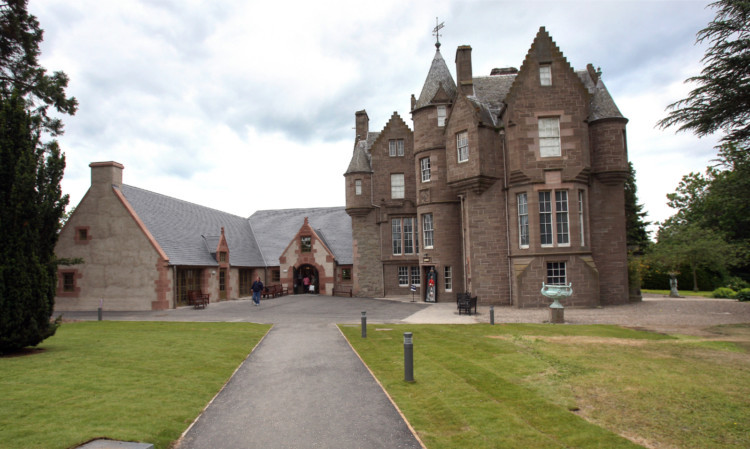A new memorial to the nation’s war dead could be put up in the heart of Perth for the 100th anniversary of the outbreak of the First World War.
For the first time, the names of more than 9,000 fallen could be recorded on a wall in the grounds of Balhousie Castle, spiritual home of The Black Watch.
The ambitious project would commemorate the death of each soldier who served with the regiment during the conflict by attaching a memorial cross on the day each died.
Men from across Tayside and Fife will be among those remembered, including almost 800 from the Dundee area who made the ultimate sacrifice during two bloody battles in the opening months of the conflict.
The project will be coordinated by The Black Watch Castle and Museum but is wholly reliant on securing around £10,000 of lottery and grant funding before it can proceed.
Should that funding be made available, the project would begin in September when the first soldiers of The Black Watch took part in fighting a century ago.
Small crosses will then be added to the wall on the date of each death, with schools and youth groups invited to help write names on the crosses and attach them to the memorial.
Emma Halford-Forbes, museum manager at Balhousie Castle, said: “We think this is a fantastic project but it does require funding to be in place before it can go ahead.”
The brutal cost of the First World War will mean there will be many days when mass casualties will be remembered.
Names will continue to be added up until and even beyond the anniversary of Armistice Day, November 11 1918, as hundreds more soldiers of The Black Watch died after that day. Key dates will include the Battle of the Aisne on September 14 1914, which was the first major action for The Black Watch during the war.
The Battle of Aubers Ridge on May 9 1915 saw 388 men killed, while another 573 lost their lives at the Battle of Loos on September 25 that same year.
Further names would then be added to the memorial wall from the Attack on High Wood, part of the Battle of the Somme, in July 1916, when 156 men of The Black Watch were killed, including men of the 6th Perthshire Battalion.
Some 300 more sacrificed themselves during the 3rd Battle of Ypres between April 21 and 26 1917.
“I know there are regimental gardens elsewhere, such as Edinburgh, where there are crosses upon which messages can be written but there has never been anything like this for The Black Watch,” Emma added.
“We wanted to do something that will last throughout the commemorative period, from the outbreak of war through Armistice and beyond.
“By the end we will have something that will strikingly illustrate the number of men of The Black Watch who were killed and commemorate their service.”
Emma also hopes that, by getting young people involved, the project and the conflict will gain greater meaning for them.
“Should the project go ahead, we will be looking for schools, cadets and youth groups and really, support from anyone interested in the project to make sure it succeeds.
“We hope the schools will gain a greater understanding of the First World War and in particular, how it affected their local area.
“There will be almost 9,000 crosses to create and that will take time and effort.”
